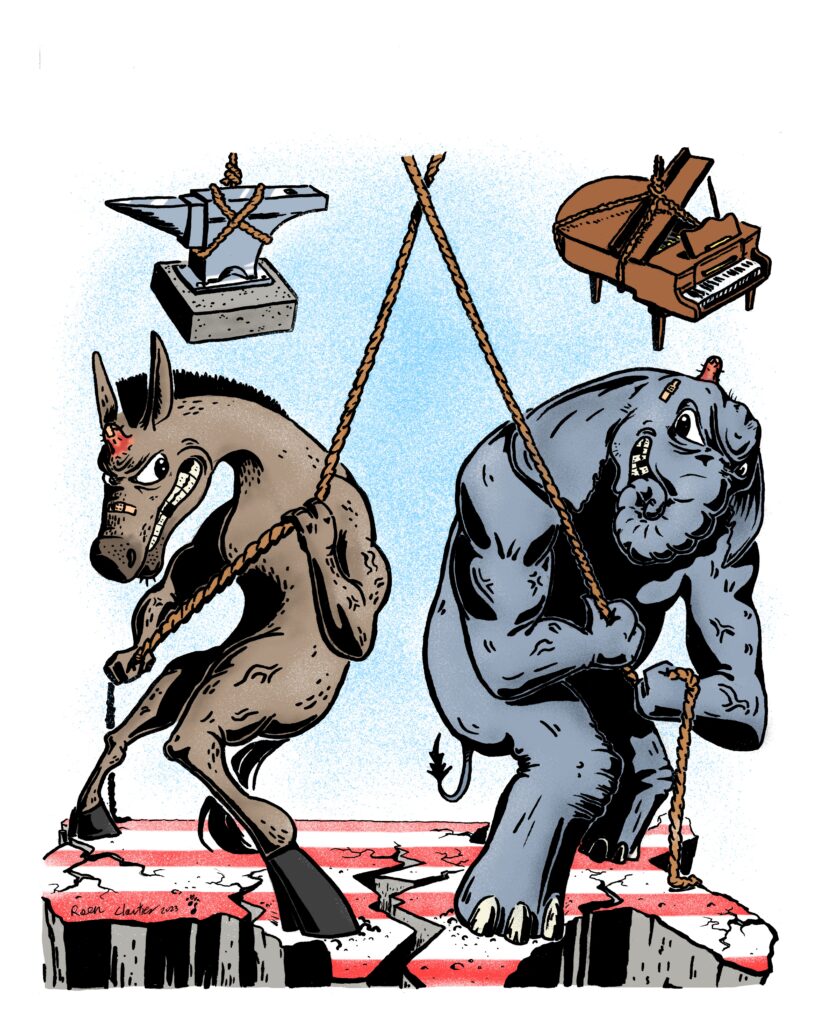CHLOE KOWALYK
Editor in Chief

It seems now more than ever, the United States is full of hate. More often than not, that hate is a result of differing political opinions.
According to a Pew Research Center article by Drew Desilver, Democrats and Republicans are the furthest apart ideologically today than they have been in 50 years.
On average, Democrats have become more liberal, and Republicans have become more conservative.
Similarly, only around two dozen moderates are serving on Capitol Hill, as compared to the over 160 moderates who served in the 1970s.
A few months before the 2020 presidential election, Pew Research Center found that most Democrats stated that they would not date someone who supports Donald Trump, and most Republicans said the same about those who support Hillary Clinton.
It’s clear there is an increased hatred between Democrats and Republicans. Why has this polarization between Americans due to politics increased so much within the past few decades?
Elizabeth Kolbert, a writer for the New Yorker, theorized that several key ideological factors play into the stark difference between our major two political parties and the demographics of their membership.
These factors were most prominent in the 1950s and during the civil rights movements. The Republican Party increased white and male membership as Richard Nixon’s Southern Strategy took hold. Unity between Republicans intensified with opposition to events such as the feminist movement, Roe v. Wade and civil rights protests occurred.
These intensely influential events left different groups separated from different parties, creating an imbalance of members between parties.
As mentioned, the Republicans, also known as GOP (Grand Old Party), held more white male members. Comparatively, the Democratic Party began to gain more women and members of minority groups.
It’s clear today that some of the most stark differences between Democrats and Republicans lie within a few core beliefs that these groups deem to be most important.
These ideological differences include abortion, immigration, foreign policy, racial equality, LGBTQ+ rights and climate change.
My theory is that the introduction of mass media, such as social media, television, radio and print publications also contribute to the mania caused by the media.
It is incredibly easy to entertain your confirmation bias—seeking out information that reaffirms your previous beliefs, regardless of whether or not the information is accurate.
False data and misinformation are incredibly prevalent online.
People are quick to start a performative political movement online simply by using a few buzzwords that get people going.
In addition, many people are becoming lazy when it comes to educating themselves. Frequently, people do not research policies or politicians before voting, and are often uneducated on their policy.
Former President Trump was quoted saying that he “loves the poorly educated,” attributing this as one of the factors of his victory in the 2016 election.
This lack of knowledge leads to a lack of understanding between political parties, and more importantly, the American people.
